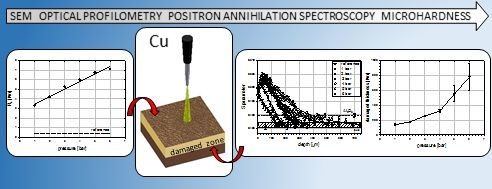Positron Annihilation and Complementary Studies of Copper Sandblasted with Alumina Particles at Different Pressures
Abstract
:1. Introduction
2. Materials and Methods
2.1. Sample Preparation
2.2. Positron Measurements
2.3. Surface Characterization
2.4. Microhardness Tests
3. Results and Discussion
3.1. SEM and Optical Profilers
3.2. Positron Lifetime Results
3.3. Defect Depths Profiles
3.4. Microhardness Profiles
4. Conclusions
Author Contributions
Conflicts of Interest
Appendix A
References
- Su, N.; Yue, L.; Liao, Y.; Liu, W.; Zhang, H.; Li, X.; Wang, H.; Shen, J. The effect of various sandblasting conditions on surface changes of dental zirconia and shear bond strength between zirconia core and indirect composite resin. J. Adv. Prosthodont. 2015, 7, 214–223. [Google Scholar] [CrossRef] [PubMed]
- Fard, S.B.; Guagliano, M. Effects of surfaces nanocrystallization induced by shot peening on material properties: A Review. Frattura ed Integrità Strutturale 2009, 7, 3–16. [Google Scholar]
- Wang, X.Y.; Li, D.Y. Mechanical, electrochemical and tribological properties of nano-crystalline surface of 304 stainless steel. Wear 2003, 255, 836–845. [Google Scholar] [CrossRef]
- Park, J.-B.; Kim, Y.S.; Lee, G.; Yun, B.G.; Kim, Ch.-H. The effect of surface treatment of titanium with sand-blasting/acid-etching or hydroxyapatite-coating and application of bone morphogenetic protein-2 on attachment, proliferation, and differentiation of stem cells derived from buccal fat pad. Tissue Eng. Regen. Med. 2013, 10, 115–121. [Google Scholar] [CrossRef]
- Burnat, B.; Walkowiak-Przybyło, M.; Błaszczyk, T.; Klimek, L. Corrosion behaviour of polished and sandblasted titanium alloys in PBS solution. Acta Bioeng. Biomech. 2013, 15, 87–95. [Google Scholar] [PubMed]
- Njuhovic, E.; Witt, A.; Kempf, M.; Wolff-Fabris, F.; Glöde, S.; Altstädt, V. Influence of the composite surface structure on the peel strength of metallized carbon fibre-reinforced epoxy. Surf. Coat. Technol. 2013, 232, 319–325. [Google Scholar] [CrossRef]
- De Vries, M.; Mastenbroek, A. SEM observations of dislocation substructures around fatigue cracks in AISI type 304 stainless steel. Met. Trans. A 1977, 8, 1497–1499. [Google Scholar] [CrossRef]
- Cai, W.; Nix, W.D. Imperfections in Crystalline Solids; Cambridge University Press; TJ International Ltd.: Padstow Cornwall, UK, 2016. [Google Scholar]
- Zum Gahr, K.-H. Microstructure and Wear of Materials; Elsevier: Amsterdam, The Netherlands, 1987. [Google Scholar]
- Hutchings, I.M. Tribology: Friction and Wear of Engineering Materials; CRC Press: Boca Raton, FL, USA, 1992. [Google Scholar]
- Dutta, R.S.; Dey, G.K. Effects of partial crystallinity and quenched-in defects on corrosion of a rapidly solidified Ti–Cu alloy. Bull. Mater. Sci. 2003, 26, 477–482. [Google Scholar] [CrossRef]
- Vlasov, I.; Panin, S.; Sergeev, V.; Lyubutin, P.; Bobdanov, O.; Maruschak, P.; Ovechkin, B.; Menou, A. Surface layer modification of 12Cr1MoV and 30CrMnSiNi2 steels by Zr+ ion beam to improve the fatigue durability. Procedia Technol. 2015, 19, 315–319. [Google Scholar] [CrossRef]
- U.S. Congress; Office of Technology Assessment. Copper: Technology and Competitiveness; OTA-E-367; U.S. Government Printing Office: Washington, DC, USA, 1988.
- Awada, A.M.; Abdel Ghany, N.A.; Dahy, T.M. Removal of tarnishing and roughness of copper surface by electropolishing treatment. Appl. Surf. Sci. 2010, 256, 4370–4375. [Google Scholar] [CrossRef]
- Dryzek, E. Defect depth profiling after sphere indentation and blasting in aluminium and aluminium alloy detected by positron annihilation. J. Mater. Sci. 2003, 38, 3755–3763. [Google Scholar] [CrossRef]
- Dryzek, J.; Nojiri, S.; Fujinami, M.; Dryzek, E.; Siemek, K.; Pachla, W. The positron probe microanalyser studies of defect distribution induced by machining of copper, iron and titanium. Tribol. Lett. 2015, 60, 16. [Google Scholar] [CrossRef]
- Dryzek, J.; Dryzek, E.; Stegemann, T.; Cleff, B. Positron annihilation studies of subsurface zones in copper. Tribol. Lett. 1997, 3, 269–275. [Google Scholar] [CrossRef]
- Horodek, P.; Siemek, K.; Dryzek, J.; Kobets, A.; Wróbel, M. Positron annihilation and complementary studies of stainless steel exposed to sandblasting at different angles. Tribol. Lett. 2017, 65, 30. [Google Scholar] [CrossRef]
- Carter, G.; Bevan, I.J.; Katardjiev, I.V.; Nobes, M.J. The erosion of copper by reflected sandblasting grains. Mat. Sci. Eng. A 1991, 132, 231–236. [Google Scholar] [CrossRef]
- Miller, S.K.; Baiker, A.; Meier, M.; Wokaun, A. Surface-enhanced Raman scattering and the preparation of copper substrates for catalytic studies. J. Chem. Soc. Faraday Trans. 1984, 80, 1305–1312. [Google Scholar] [CrossRef]
- Yuan, L.; Chen, X.; Maganty, S.; Cho, J.; Ke, Ch.; Zhou, G. Enhancing the oxidation resistance of copper by using sandblasted copper surfaces. Appl. Surf. Sci. 2015, 357, 2160–2168. [Google Scholar] [CrossRef]
- Kansy, J. Microcomputer program for analysis of positron annihilation lifetime spectra. Nucl. Instrum. Method. Phys. Res. A 1996, 374, 235–244. [Google Scholar] [CrossRef]
- Horodek, P.; Dryzek, J. Application of encapsulated 22-Na isotope to Doppler spectroscopy based on positrons emitted directly from the source. Acta Phys. Pol. B Proc. Suppl. 2016, 9, 1001–1007. [Google Scholar] [CrossRef]
- Available online: https://www.ifj.edu.pl/private/jdryzek/page_r18.html (accessed on 21 November 2017).
- Dryzek, J.; Singleton, D. Implantation profile and linear absorption coefficients for positrons injected in solids from radioactive sources 22Na and 68Ge\68Ga. Nucl. Instrum. Method. Phys. Res. B 2006, 252, 197–204. [Google Scholar] [CrossRef]
- Vander Voort, G. Metallographic Specimen Preparation for Electron Backscattered Diffraction. Available online: https://vacaero.com/information-resources/metallography-with-george-vander-voort/1131-metallographic-specimen-preparation-for-electron-backscattered-diffraction.html (accessed on 21 November 2017).
- MacKenzie, I.K.; Jackman, T.E.; Thrane, N. Positron mean lifetimes in annealed metals. Phys. Rev. Lett. 1975, 34, 512–513. [Google Scholar] [CrossRef]
- Saltykov, S.A. Stereometric Metallography, 2nd ed.; Metallurgizdat: Moscow, Russia, 1958. [Google Scholar]
- Forster, M.; Claudy, W.; Hermes, H.; Koch, M.; Maier, K.; Major, J.; Stoll, H.; Schaefer, H.E. High-temperature equilibrium vacancy formation in ceramic materials studied by positron annihilation. Mater. Sci. Forum 1992, 105–110, 1005–1012. [Google Scholar] [CrossRef]
- Noguchi, M.; Mitsuhashi, T.; Chiba, T.; Tanaka, T.; Tsuda, N. Positron lifetimes in oxides. J. Phys. Soc. Jpn. 1972, 32, 1242–1247. [Google Scholar] [CrossRef]
- Hinode, K.; Tanigawa, S.; Doyama, M. Positron lifetimes in deformed copper. J. Phys. Soc. Jpn. J. Phys. Soc. 1976, 41, 2037–2042. [Google Scholar] [CrossRef]
- Lynn, K.G.; Ure, R.; Byrne, J.G. The effect of plastic deformation on positron annihilation in copper of varying grain size. Acta Metall. 1974, 22, 1075–1077. [Google Scholar] [CrossRef]
- Campillo Robles, J.M.; Ogando, E.; Plazaola, F. Positron lifetime calculation for the elements of the periodic table. J. Phys. Condens. Matter 2007, 19, 176222. [Google Scholar] [CrossRef] [PubMed]
- Schaefer, H.E.; Stuck, W.; Banhart, H.; Bauer, W. Thermal vacancies in the noble metals Cu, Ag, Au and in Pt studied by positron lifetime spectroscopy. Mater. Sci. Forum 1987, 15–18, 117–124. [Google Scholar] [CrossRef]
- Čížek, J.; Procházka, I.; Cieslar, M.; Kužel, R.; Kuriplach, J.; Chmelík, F.; Stulíková, I.; Bečvář, F.; Melikhova, O. Thermal stability of ultrafine grained copper. Phys. Rev. B 2002, 65, 094106. [Google Scholar] [CrossRef]
- McKee, B.T.A.; Saimoto, S.; Stewart, A.T.; Stott, M.J. Positron trapping at dislocations in copper. Can. J. Phys. 1974, 52, 759–765. [Google Scholar] [CrossRef]
- Zhou, K.; Zhang, T.; Wang, Z. Positron lifetime calculation for possible defects in nanocrystalline copper. Phys. Scr. 2015, 90, 105701. [Google Scholar] [CrossRef]
- Čížek, J.; Janeček, M.; Srba, O.; Kužel, R.; Barnovská, Z.; Procházka, I.; Dobatkin, S. Evolution of defects in copper deformed by high-pressure torsion. Acta Mater. 2011, 59, 2322–2329. [Google Scholar] [CrossRef]
- Dryzek, J.; Horodek, P.; Wróbel, M. Use of positron annihilation measurements to detect the defect beneath worn surface of stainless steel 1.4301 (EN) under dry sliding condition. Wear 2012, 294–295, 264–269. [Google Scholar] [CrossRef]
- Chang, Y.A.; Pike, M.; Liu, C.T.; Bilbrey, A.R.; Stone, A.S. Correlation of the hardness and vacancy concentration in FeAl. Intermetallics 1993, 1, 107–115. [Google Scholar] [CrossRef]
- Auerkari, P. Mechanical and Physical Properties of Engineering Alumina Ceramics; VTT, Technical Research Centre of Finland; Julkaisija-Utgivare Publisher: Helsinki, Finland, 1996. [Google Scholar]
- Dryzek, E.; Dryzek, J. The detection of subsurface zones in aluminium-based alloys 2017A and 6101A using a positron annihilation technique. Tribol. Int. 2006, 39, 669–677. [Google Scholar] [CrossRef]
- Tuomisto, F.; Makkonen, I. Defect identification in semiconductors with positron annihilation: Experiment and theory. Rev. Mod. Phys. 2013, 85, 1583–1631. [Google Scholar] [CrossRef]
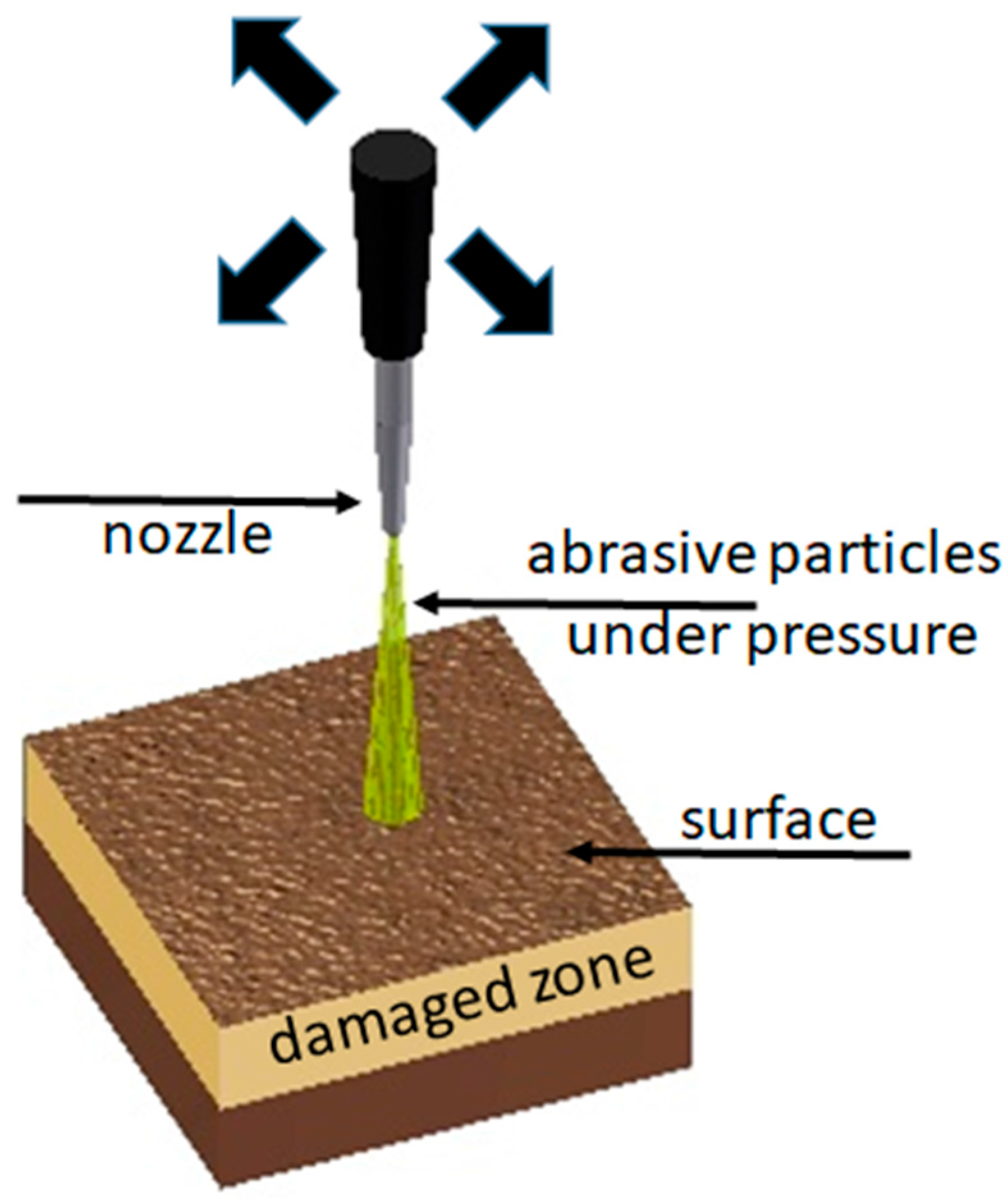
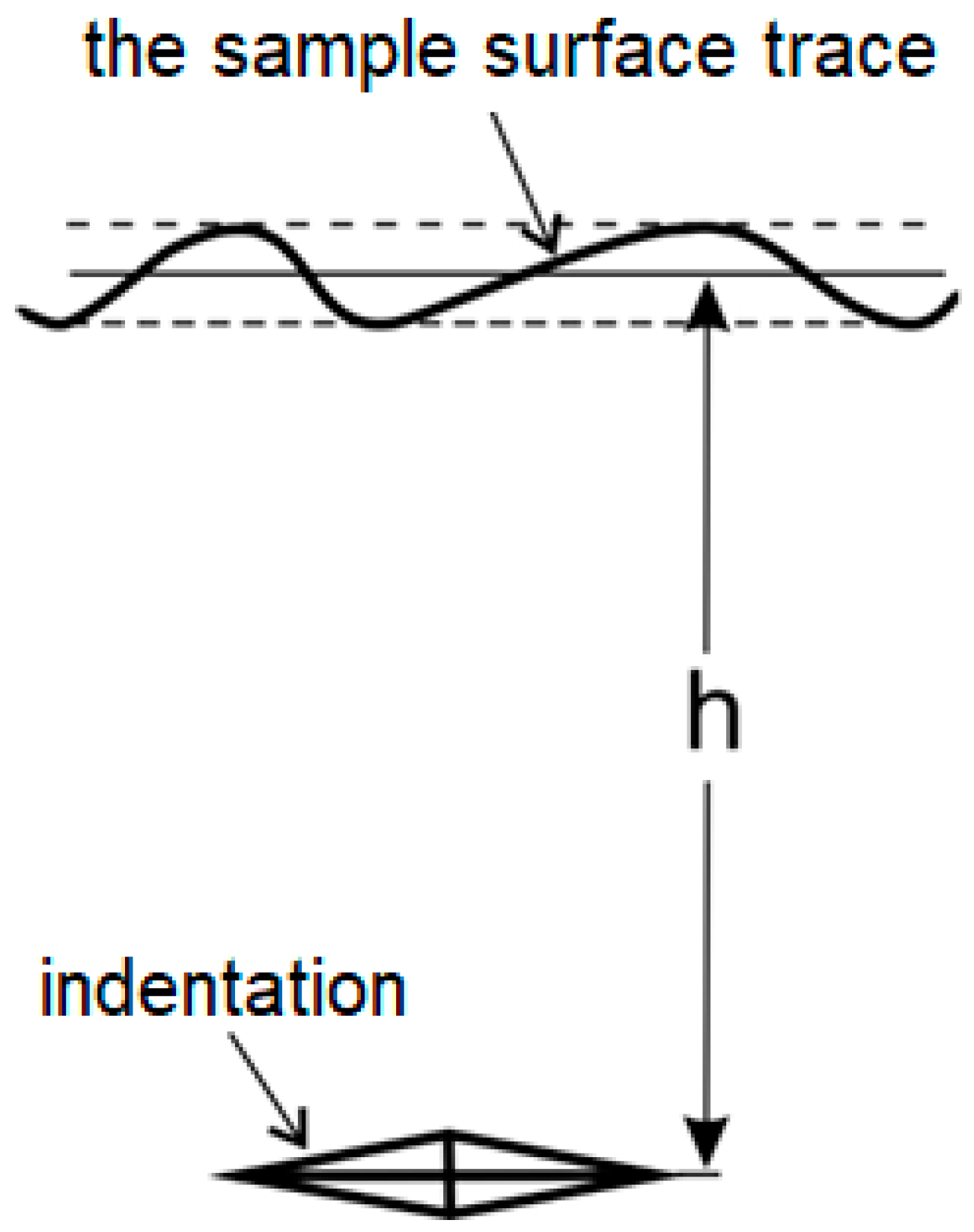
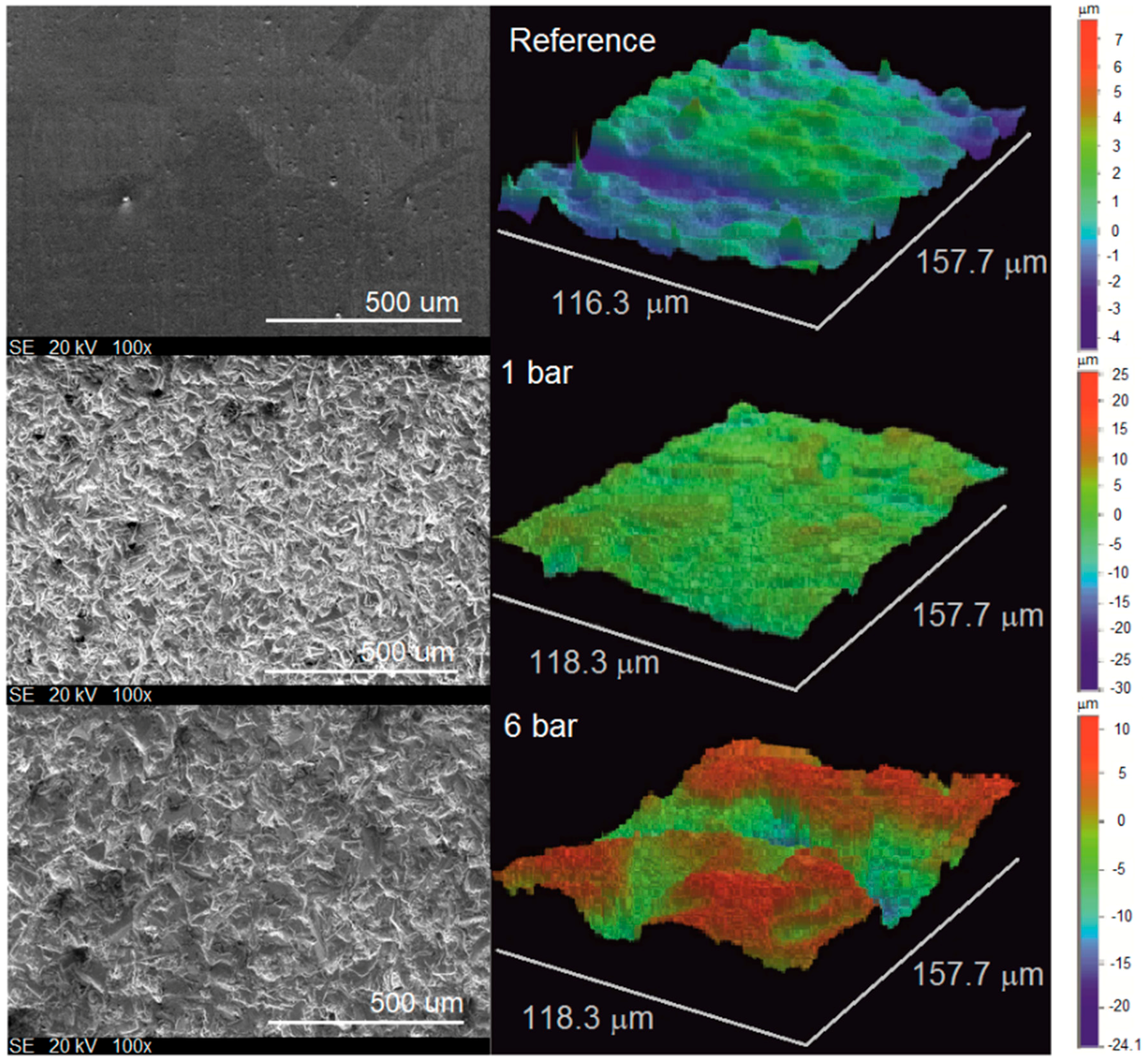
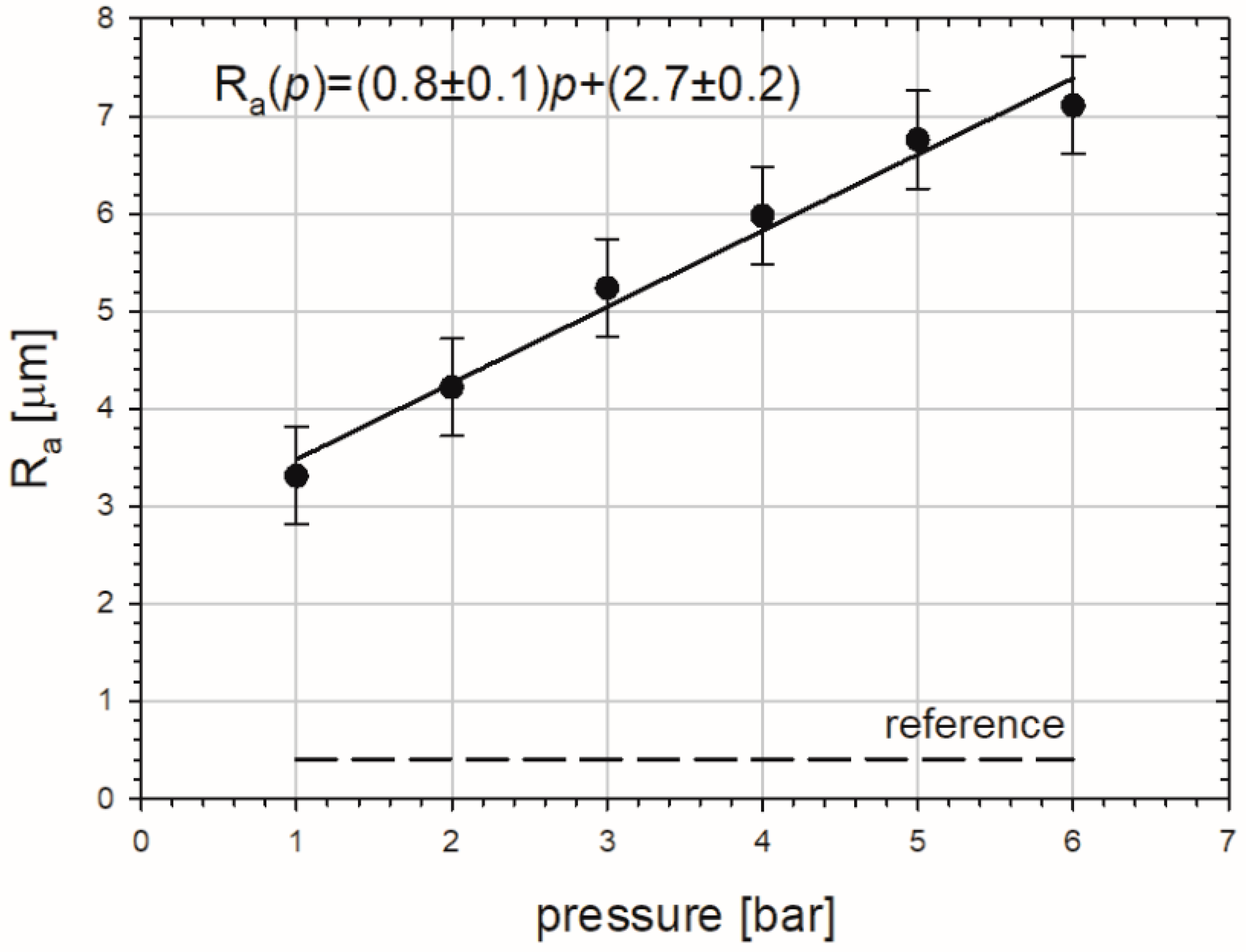
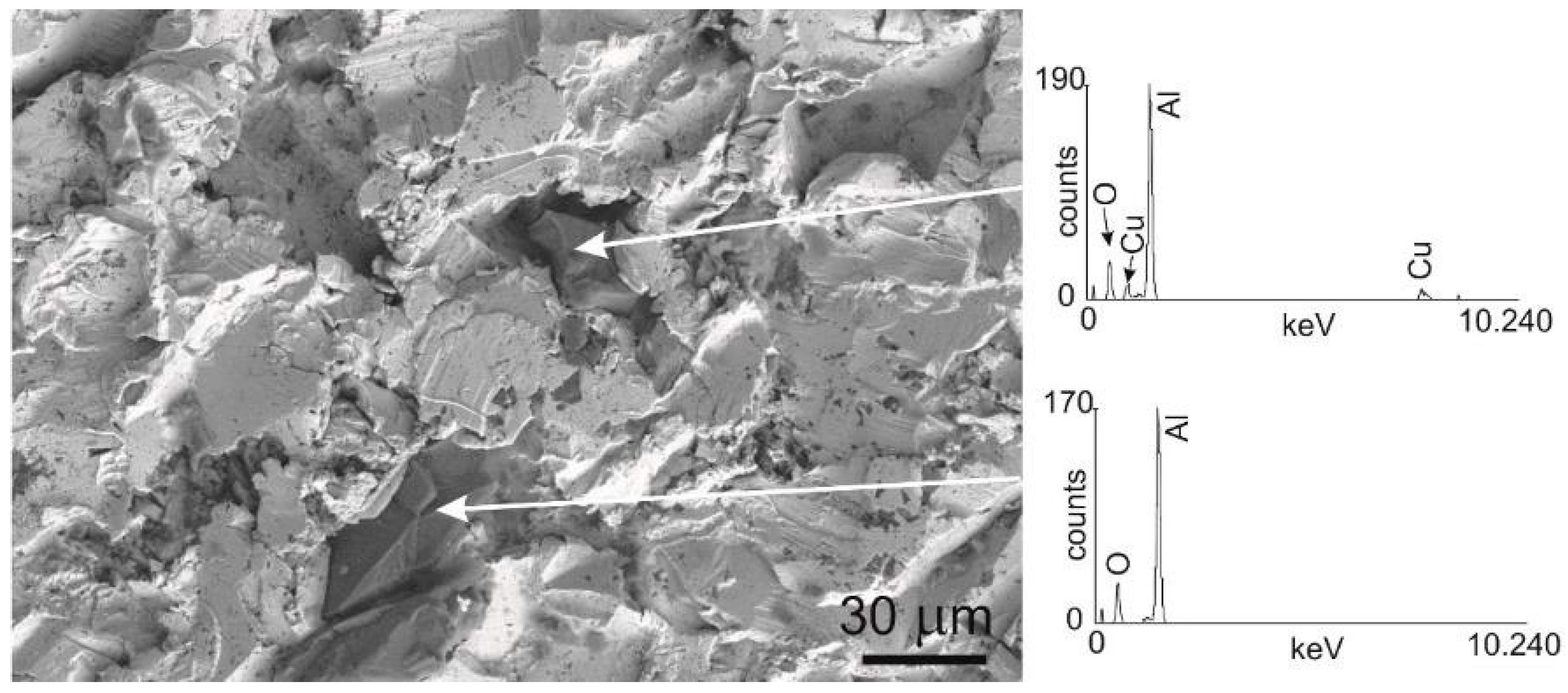
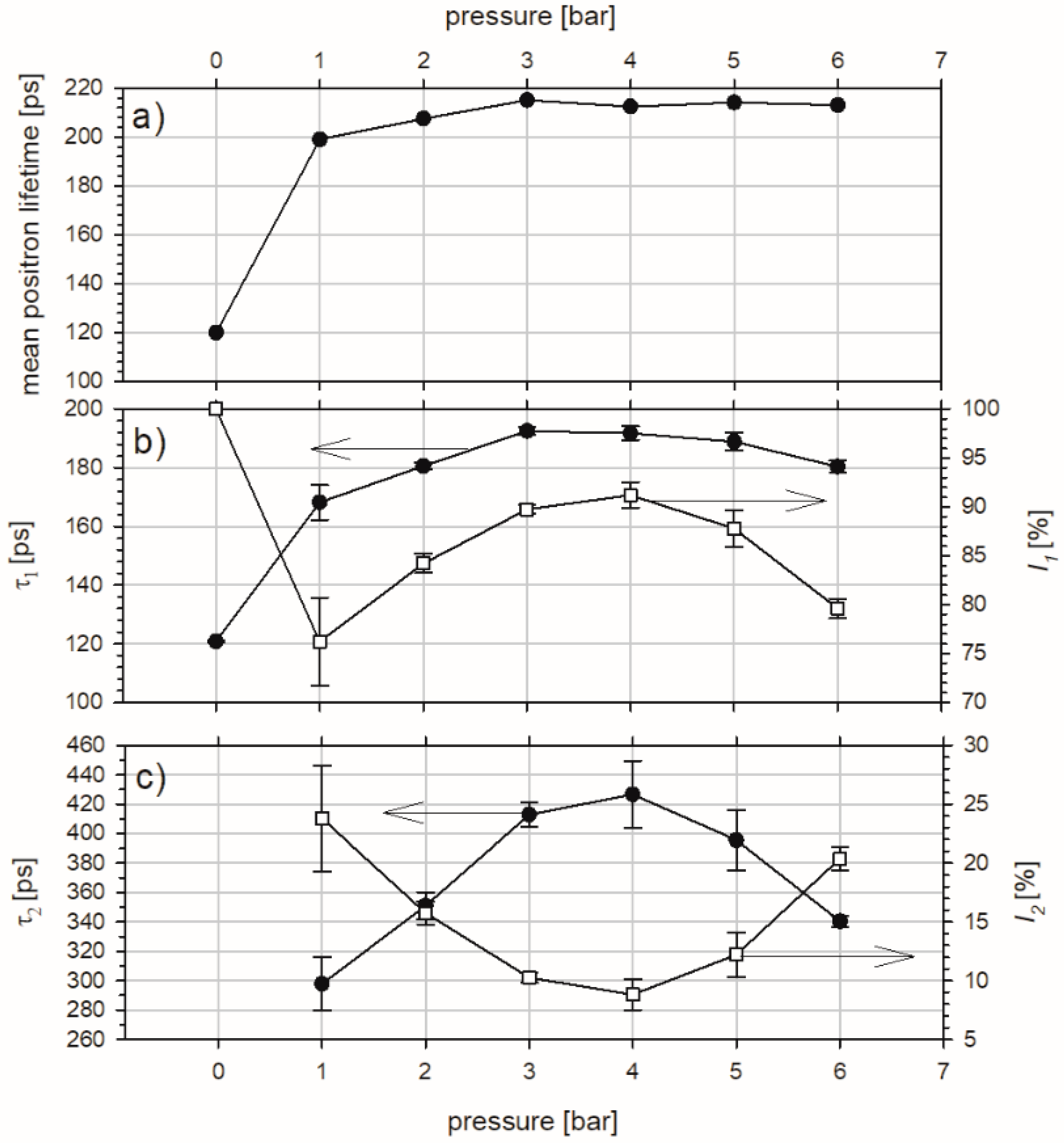
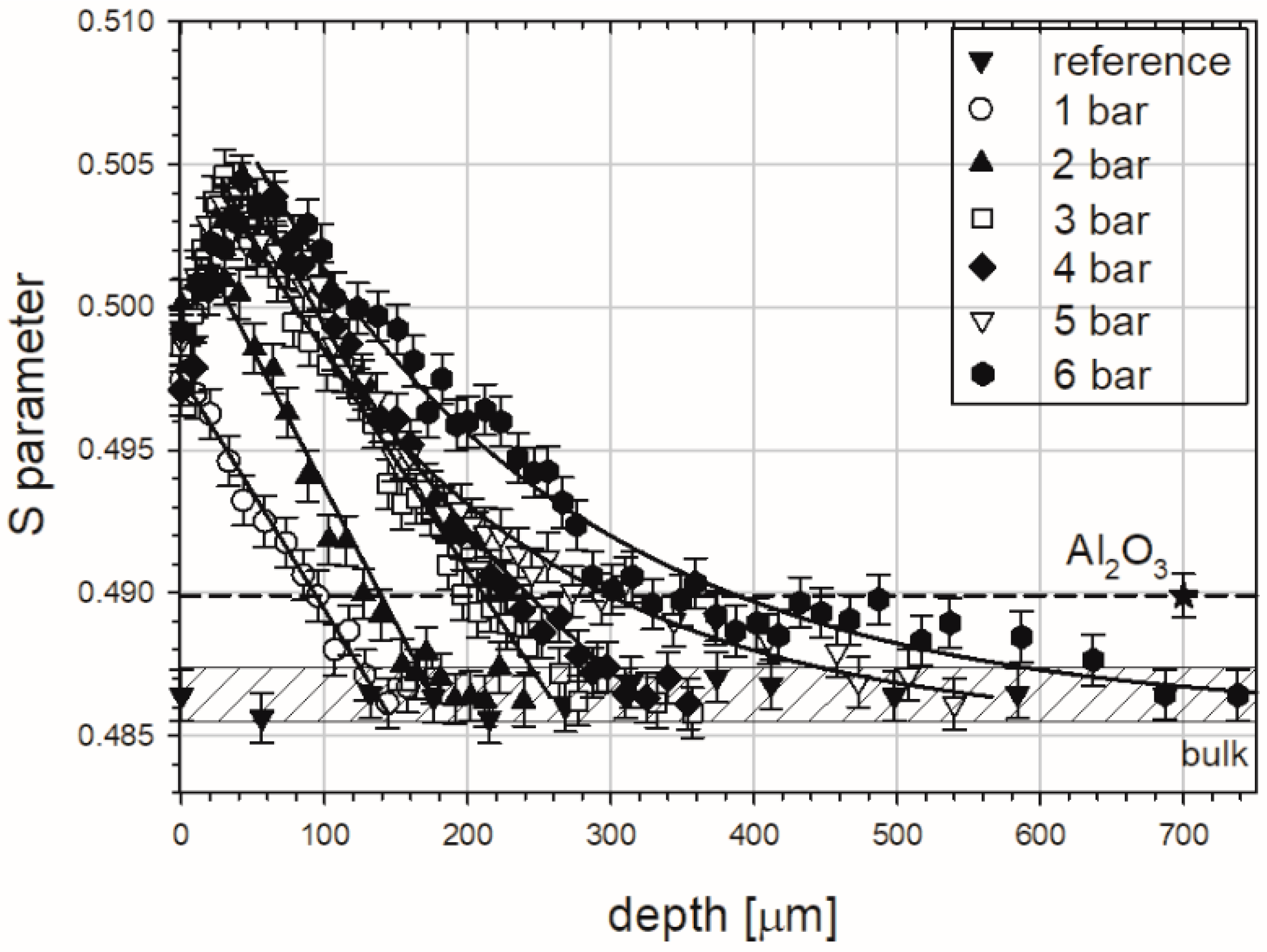
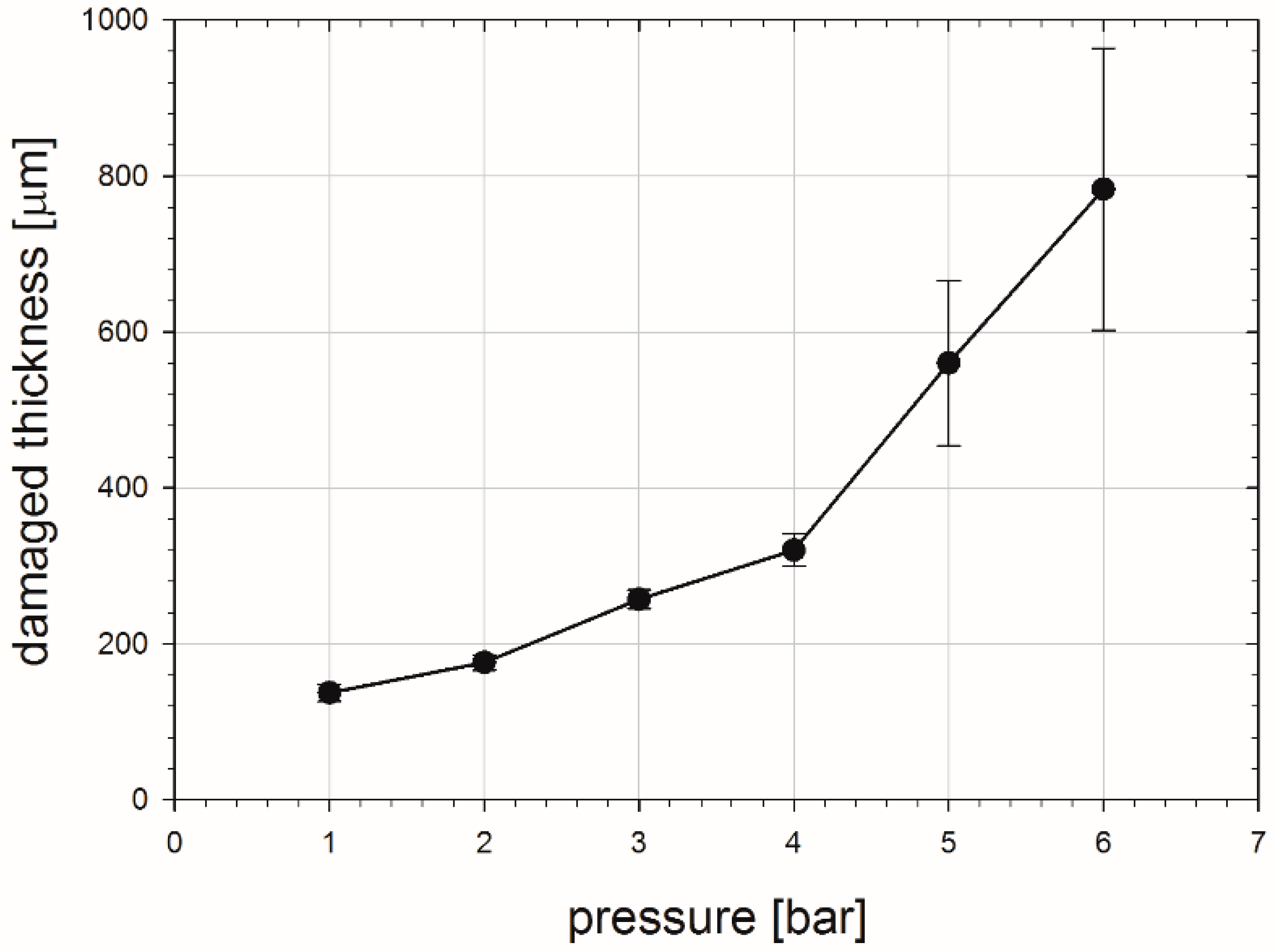
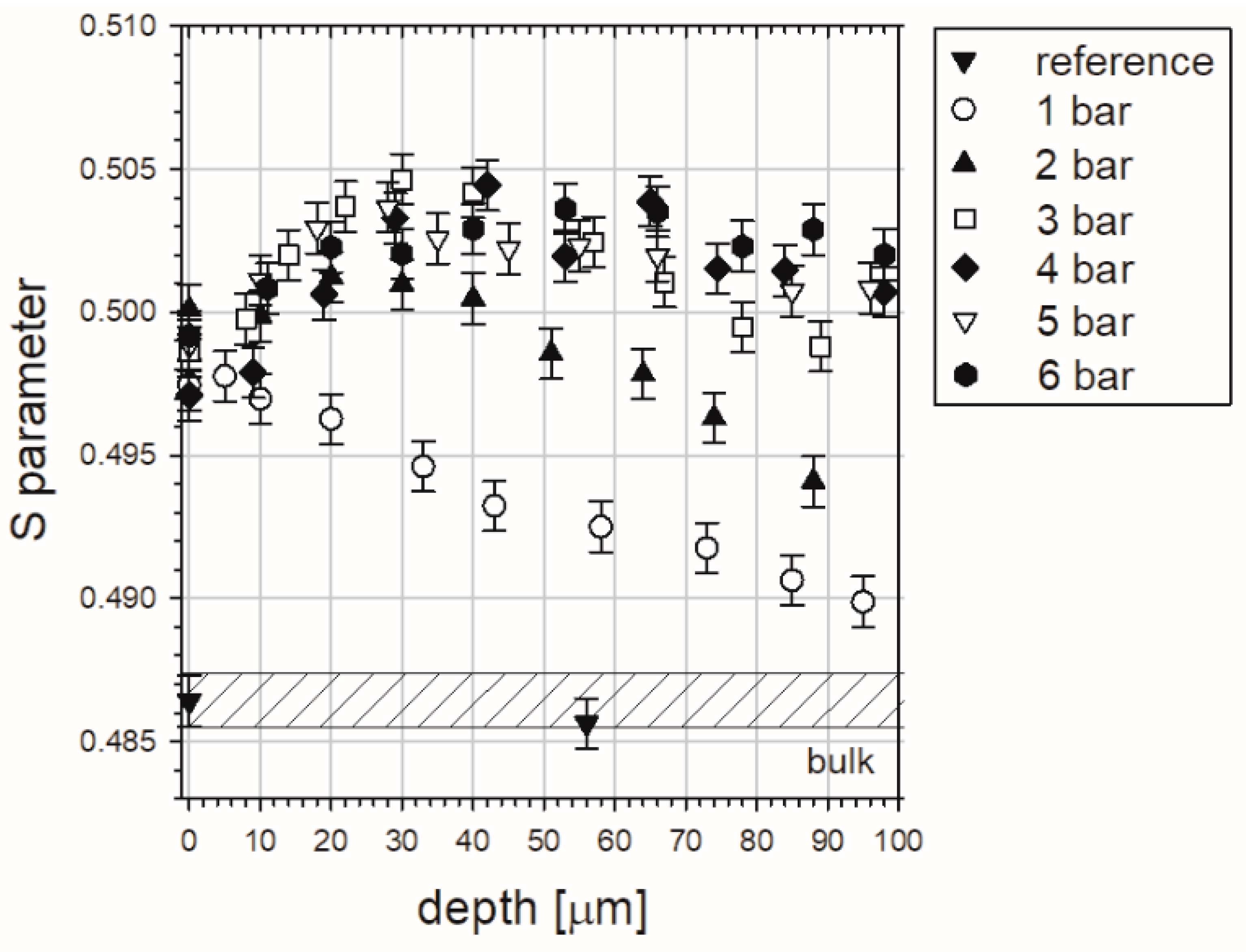
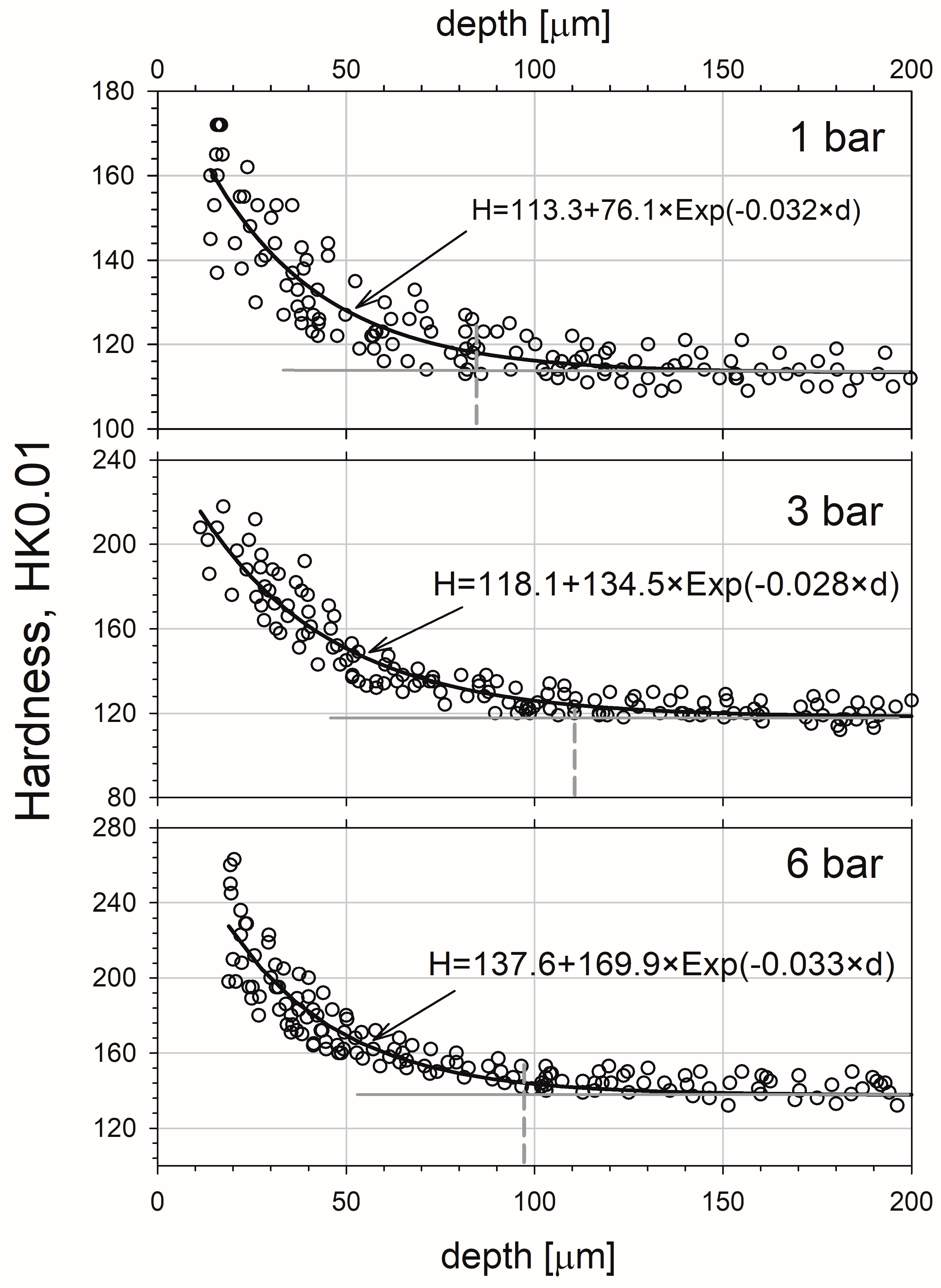
© 2017 by the authors. Licensee MDPI, Basel, Switzerland. This article is an open access article distributed under the terms and conditions of the Creative Commons Attribution (CC BY) license (http://creativecommons.org/licenses/by/4.0/).
Share and Cite
Horodek, P.; Siemek, K.; Dryzek, J.; Wróbel, M. Positron Annihilation and Complementary Studies of Copper Sandblasted with Alumina Particles at Different Pressures. Materials 2017, 10, 1343. https://doi.org/10.3390/ma10121343
Horodek P, Siemek K, Dryzek J, Wróbel M. Positron Annihilation and Complementary Studies of Copper Sandblasted with Alumina Particles at Different Pressures. Materials. 2017; 10(12):1343. https://doi.org/10.3390/ma10121343
Chicago/Turabian StyleHorodek, Paweł, Krzysztof Siemek, Jerzy Dryzek, and Mirosław Wróbel. 2017. "Positron Annihilation and Complementary Studies of Copper Sandblasted with Alumina Particles at Different Pressures" Materials 10, no. 12: 1343. https://doi.org/10.3390/ma10121343




